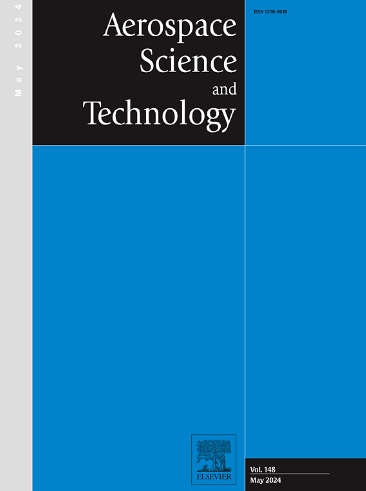Optimization of mechanical deployable reentry vehicle based on multi-fidelity aerodynamic-trajectory coupling model
IF 5
1区 工程技术
Q1 ENGINEERING, AEROSPACE
引用次数: 0
Abstract
As the aerospace industry continues to advance, the demand for round-trip transportation between Earth and space, as well as deep space exploration missions, is increasing. The mechanical deployable reentry vehicle, a complex multidisciplinary system, experiences parameter coupling between trajectory design and aerodynamic simulation. The calculation of trajectory and the design of aerodynamic layout directly impact the flight process. To address issues such as biased trajectory data obtained without considering disciplinary coupling and the high computational costs associated with overall aerodynamic layout optimization, this paper fully considers the impact of global aerodynamic drag on the flight trajectory. A multi-fidelity optimization model for reentry vehicles, named Multi-Fidelity Aerodynamics-Trajectory Coupling (MF-ATC), is proposed. The model uses a large number of low-accuracy model samples to control computational costs, without considering the coupling relationship, and a small number of high-accuracy model samples to ensure approximation accuracy, achieving fast and precise prediction of flight trajectories. The results demonstrate that the MF-ATC model improves trajectory prediction accuracy and efficiently accomplishes aerodynamic shape optimization, effectively enhancing the vehicle's performance. The model shows great potential for engineering applications.
求助全文
约1分钟内获得全文
求助全文
来源期刊

Aerospace Science and Technology
工程技术-工程:宇航
CiteScore
10.30
自引率
28.60%
发文量
654
审稿时长
54 days
期刊介绍:
Aerospace Science and Technology publishes articles of outstanding scientific quality. Each article is reviewed by two referees. The journal welcomes papers from a wide range of countries. This journal publishes original papers, review articles and short communications related to all fields of aerospace research, fundamental and applied, potential applications of which are clearly related to:
• The design and the manufacture of aircraft, helicopters, missiles, launchers and satellites
• The control of their environment
• The study of various systems they are involved in, as supports or as targets.
Authors are invited to submit papers on new advances in the following topics to aerospace applications:
• Fluid dynamics
• Energetics and propulsion
• Materials and structures
• Flight mechanics
• Navigation, guidance and control
• Acoustics
• Optics
• Electromagnetism and radar
• Signal and image processing
• Information processing
• Data fusion
• Decision aid
• Human behaviour
• Robotics and intelligent systems
• Complex system engineering.
Etc.
 求助内容:
求助内容: 应助结果提醒方式:
应助结果提醒方式:


